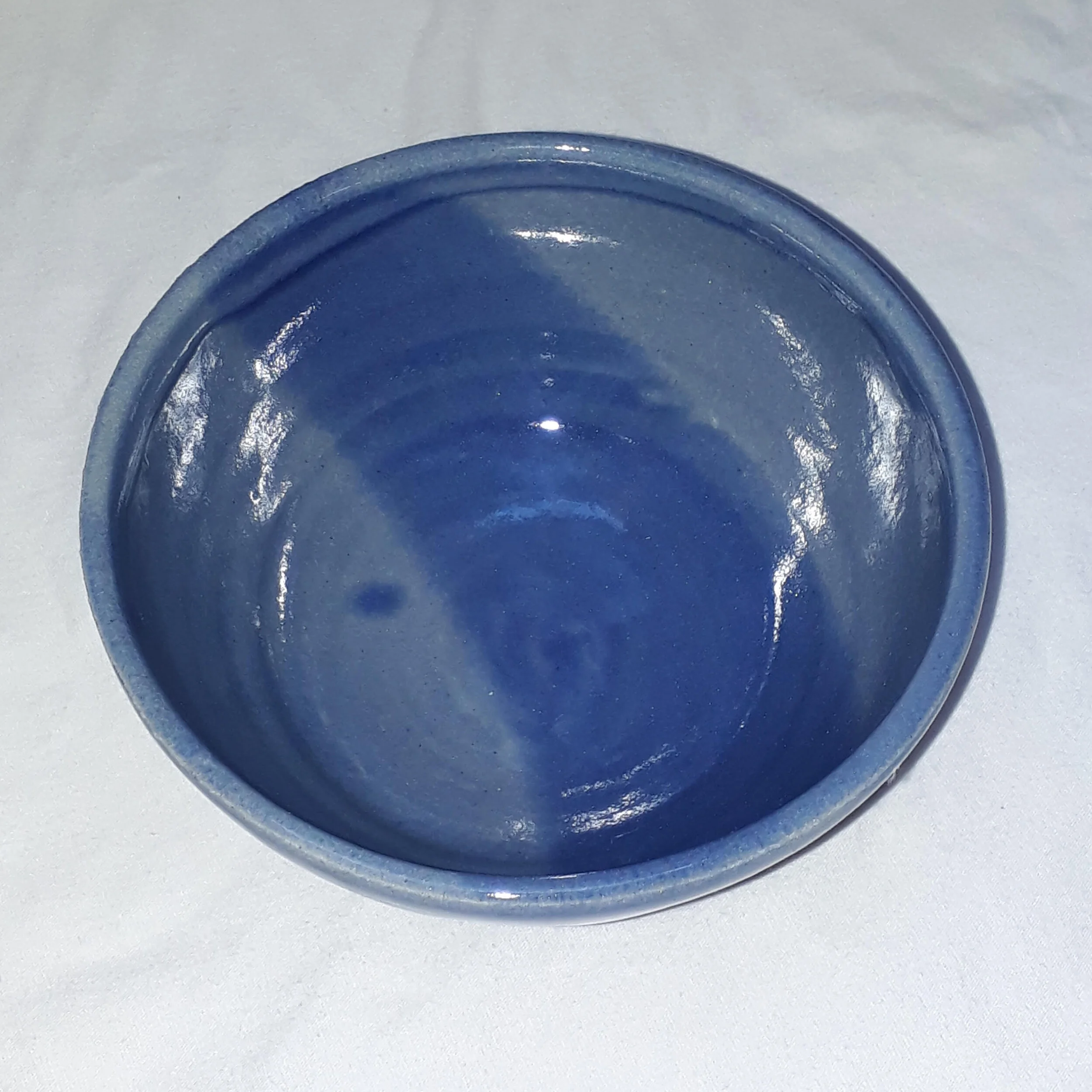How do you describe what you do?
Making and teaching pottery since 1992.
How did you get started in ceramics?
When I first saw someone throw a pot on a wheel I thought, that is so amazingly beautiful, I want to learn to do that. When I watched the professional thrower followed by the hapless contestants on Bruce Forsyth’s Generation Game in the sixties I was hooked: I was about 8. Luckily my school had good pottery equipment, including a wheel. After I’d learned to throw there, which culminated in my first teapot – which is, after all, the highest form of expres`sion in ceramics! – it was adult ed classes. This was then followed by a job as the pottery and art teacher at a USA summer camp in 1992 and I then did a Diploma in Ceramics from London Metropolitan University in 1995.
What makes your work and/or process unique?
Clay is plastic to begin with and, once fired, it is virtually indestructible (apart from breakages, obviously). What I aspire to do is capture the whoosh of the moment when the plastic clay is formed and set it in stone(ware). So there are lots of waves and spirals in my forms and surfaces. When I glaze, I dip my pots to get parabola-shaped curves and I mix glazes to get chaotic, but controlled reactions. There is another aspiration that I want to return to, when I get more time and space, which is sculptural creatures of mixed mechanical and biological design. Think of steampunk dragons. I haven’t seen anyone else doing this yet.
What would your top tip(s) be for anyone considering taking up art/design?
Don’t give up the day job. Vita brevis, ars longa – which is Latin for, roughly, it’s bloody hard work making a living out of a craft like ceramics. Most of the artists I have met have supported themselves by teaching rather than making, or had parallel careers or other income. I’ve been lucky enough to retire about a year ago, which is why I’ve been able to take up pottery seriously again after completing my Diploma 24 years ago.
My other tip would be to teach what you know. For the reasons outlined below about the importance of Colchester MakerSpace, it’s essential that those of us who have learned these skills pass them on. Furthermore, you learn from your students, you perfect your art and you might earn something as well. I did all three by teaching art and pottery, starting in 1992 – even if it was just for summer holidays.
What piece of work or project are you most proud of?
A green horse-dragon sculpture that I made on my Diploma, which has both a whoosh factor and some sculptural uniqueness.
When you have the dreaded creative block, where do you get your ideas and inspiration from?
Pottery is both an art and a craft. If I run out of ideas (art), I fall back on craft. I return to making the same mugs and bowls, or tile-painting, that I’ve been doing for the last year. There is always the search for the perfect piece that keeps me going, not to mention the struggles of working with glazes and temperamental kilns (MakerSpace potters will know what I mean!)
What other artist or maker do you admire and why?
Bernard Leach (who was strangely unpopular when I did my Diploma – maybe things have changed now). His stoneware vases, for example, with quick-brushed decorations, have the whoosh factor that I’ve mentioned above. So does the soda- (not salt-) glazed, functional domestic ware of Ruthanne Tudball.
For decoration, it's Lara Scobie's coracle bowls, circa 1999.
Any books on your shelf or exhibitions and events coming up that you can recommend?
I went to the International Ceramics Festival in Aberystwyth last July, a 3-day weekend of demonstrations, stalls and exhibitions. It was the right event for me at the time as an all-round refresher of the contemporary studio ceramics scene. I’d recommend any ceramic artist go at least once – but the next one isn’t until 2021. Closer to home, Anglian Potters have demonstrations and exhibitions. I heartily recommend everyone goes to the their Christmas Exhibition at All Saints’ Church, Jesus Lane, Cambridge (Saturday 9th November to Sunday 8th December 2019). I’ve entered some of my pots in the show for the first time!
Why is Colchester MakerSpace important to you/or and your work?
When anyone in this throw-away, consumer-age makes a hand-crafted item, it is an almost revolutionary act. Colchester MakerSpace is important here because it gives me and many others the opportunity to be creative, learn a craft, and express ourselves as active makers instead of passive receivers. Perhaps, also, the making of a pot or a print or a textile piece reminds us how much design, material and labour goes into the objects around us. Maybe, if everyone was a maker, we’d have more respect for our stuff and we’d do more re-using and re-purposing. We’d certainly have more collective skills to do it. Ultimately, Colchester MakerSpace helps keep alive a variety of skills that otherwise would be disappearing even more rapidly from modern life.
LINKS:
Robbie Spence roadlesstraveller pottery: https://roadlesstraveller.net
Instagram: https://www.instagram.com/roadlesstravelleruk
My Anglian Potters: https://www.anglianpotters.org.uk/member1910
Anglian Potters Christmas Exhibition: https://www.anglianpotters.org.uk/christmas-open-exhibition
International Ceramics Festival: http://www.internationalceramicsfestival.org



